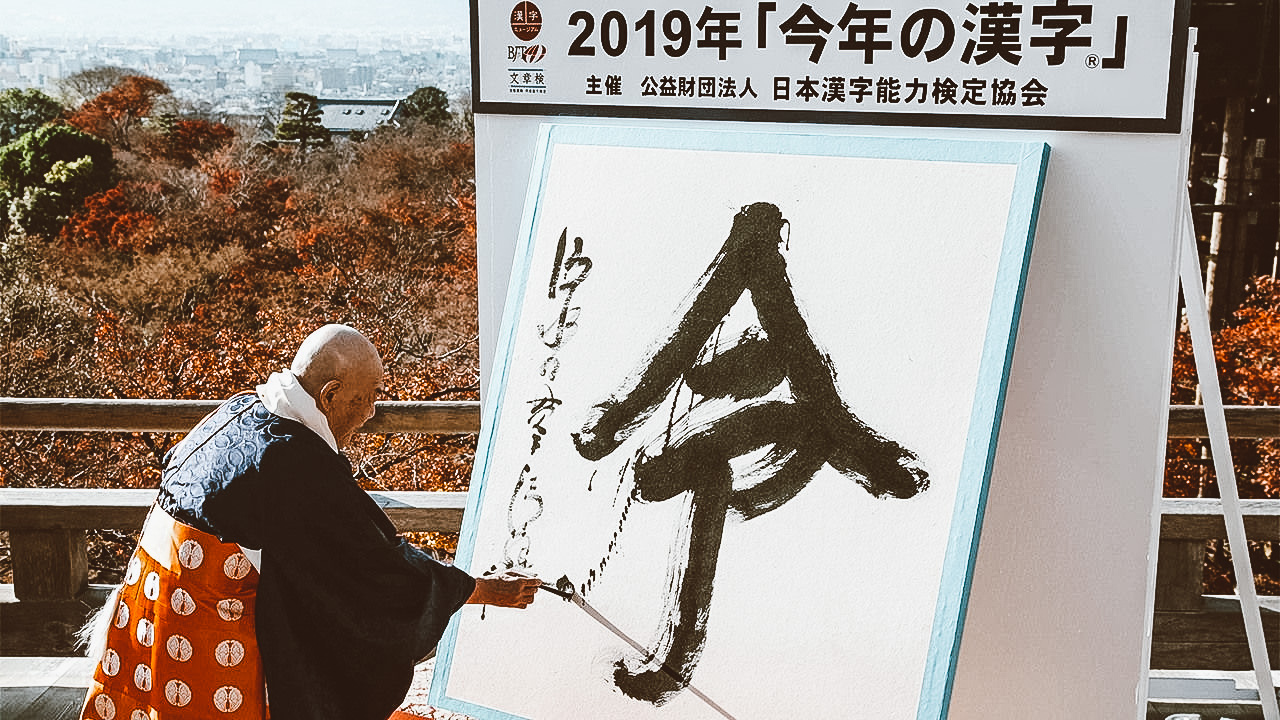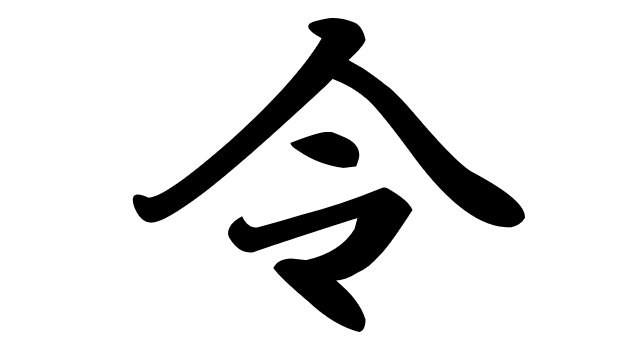2019 Kanji of the year: 令
Il 2020 è finalmente arrivato e, come ogni anno, il Giappone ha eletto il “Kanji dell’anno” e per il 2019 la scelta è stata molto logica.

Dicembre e gennaio ci costringono sempre a fare alcune retrospettive sull’anno appena trascorso e la scelta per Kanji dell’anno non è meno degna.
Amministrato dalla giapponese Kanji Aptitude Testing Foundation, con sede a Kyoto, un singolo personaggio giapponese viene scelto a scrutinio aperto. La scelta finale ha lo scopo di incarnare un profondo significato per l’anno in chiusura.
Questa tradizione annuale viene annunciata da Seihan Mori, l’abate capo dello storico tempio Kiyomizudera di Kyoto. Questo non è un annuncio normale, infatti, l’abate capo scrive il kanji con un gigantesco pennello calligrafico mentre si trova sul balcone del tempio.
Questa volta sono stati espressi 216.325 voti e il vincitore kanji dell’anno è 令 pronunciato rei.

Rei significa “ordine” (nel senso di controllo ordinato), tuttavia, in alcuni contesti può anche significare “bello”. Questo kanji è diventato famoso nel 2019 non solo come scelta del vincitore, ma anche quando è stata annunciata Reiwa, la nuova era imperiale del Giappone. Il governo giapponese ha chiarito che il significato di questa nuova era è “bella armonia”
Re / rei ha ricevuto 30.427, circa il 14% dei voti totali. Considerando che la lingua giapponese ha più di 2100 kanji ad uso regolare, questo è ancora un risultato molto importante per ogni singolo personaggio. Il secondo posto è stato occupato da 新 / shin, che significa “nuovo”, e il terzo posto 和 / wa, che significa “armonia” ed è il secondo kanji di Reiwa.
Il 2019 è stato un anno molto importante per il Giappone poiché ha segnato il cambiamento nell’era imperiale dal 1989. La selezione di 令 / rei non è una sorpresa. Tuttavia, riflette una mentalità più felice rispetto ai Kanji dell’anno nel 2018 (“disastro”), 2017 (“nord”, in riferimento al lancio di missili nordcoreani) e 2014 (“imposta”, il risultato di un impopolare aumento dell’imposta sulle vendite quell’anno).
Speriamo che 令 和 / rei non sia solo un promemoria dei cambiamenti significativi del 2019, ma anche un raggio di speranza che cose più belle stanno arrivando nel 2020.
E con questo, vogliamo augurare un felice anno nuovo a tutti i nostri lettori, alle vostre famiglie e persone care.
Sources: ©SoraNews24
Images ©SoraNews24, japon-secreto.com
Condividi:
- Fai clic per condividere su Facebook (Si apre in una nuova finestra)
- Fai clic qui per condividere su Twitter (Si apre in una nuova finestra)
- Fai clic qui per condividere su Tumblr (Si apre in una nuova finestra)
- Fai clic qui per condividere su Pinterest (Si apre in una nuova finestra)
- Fai clic per condividere su Telegram (Si apre in una nuova finestra)
- Fai clic per condividere su WhatsApp (Si apre in una nuova finestra)
- Fai clic qui per condividere su Reddit (Si apre in una nuova finestra)
- Fai clic qui per stampare (Si apre in una nuova finestra)






